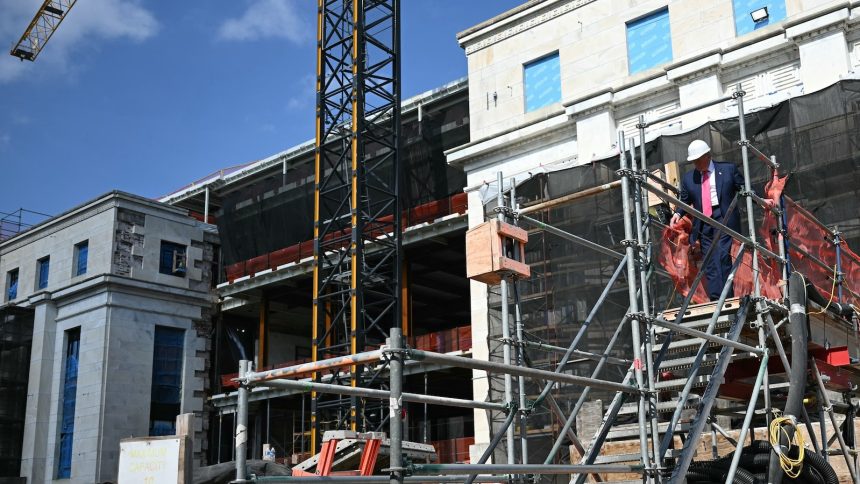On Wednesday, the Federal Reserve is poised to announce its latest interest rate decision, following President Donald Trump’s unusual visit to the central bank where he advocated for a reduction in rates.
For months, the Fed has resisted Trump’s public criticism, having maintained steady interest rates for seven consecutive months. This cautious stance reflects concerns about potential inflationary pressures linked to Trump’s tariff policies.
According to the CME FedWatch Tool, a gauge of market sentiment, investors foresee a remarkable 97% likelihood that the Fed will keep rates unchanged during this meeting.
Trump has persistently urged the central bank to lower rates, asserting that such action would enhance economic performance and reduce government debt interest payments. “We have a man who just refuses to lower the Fed rate,” Trump remarked about Fed Chair Jerome Powell last month. He even joked, “Maybe I should go to the Fed. Am I allowed to appoint myself? I’d do a much better job than these people.”
It is important to note that the Fed operates as an independent agency, and legally, Trump cannot appoint himself as its head. Additionally, he has criticized Powell for cost overruns associated with the central bank’s $2.5 billion building renovation. The Fed has explained that these overruns stem from unforeseen expenses, asserting that the renovations will ultimately lead to long-term cost savings by consolidating most of its operations.
Under federal law, the president can remove the Fed chair for “cause,” though this has never occurred in history. Powell’s term as chair is due to end in May 2026.
The Fed’s dual mandate includes controlling inflation and maximizing employment. Lowering interest rates could theoretically stimulate economic activity and support job growth, especially in a climate of modest inflation. However, the central bank expressed concerns last month about the possibility of renewed inflation driven by high tariffs when it issued its forecasts.
While tariffs had a minor impact on inflation observed in June, analysts noted that the overall price increase was predominantly influenced by rising housing and food costs, which were largely unrelated to tariffs.
Despite its measured approach, the Fed projected last month that it may implement two quarter-point interest rate cuts by the end of 2025, reflecting a continuation of previously issued predictions. The current federal funds rate is between 4.25% and 4.5%, maintaining much of the significant increases enacted to combat inflation triggered during the pandemic.
Earlier this month, Powell indicated that he would not dismiss the possibility of an interest rate cut at the upcoming meeting in July. “I wouldn’t take any meeting off the table or put any on the table,” Powell stated during a discussion at the European Central Bank forum in Sinatra, Portugal, emphasizing the importance of adapting to evolving data.
Read More News here: Los Angeles Reporter | Medical Herald






